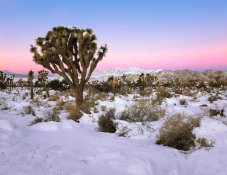If I'm using Provia, I might need some warming to avoid a blue cast so I'll probably try with and without to be sure.
If I'm still using Velvia, then a UV filter might help tone it down? Alternative is to shoot later in the morning or earlier in the afternoon.
Does all this sound ok, and are there any other controls I could use?
Yes, a light warming filter can counteract the cast, but it requires a bit of judgement as it is sometimes obvious that the natural response of the film has been suppressed/compromised by the use of a filter. Conversely, a light to moderate pink filter (SKYLIGHT 1B) will enhance pinks/reds while giving less prominence to blues.
A UV(0) filter is of more usefulness at higher altitudes for getting through haze; it can still let the strong blue of high altitudes through to the film.
There are many, many 'togs who enjoy the way E6 film renders specific times of the day, as you have caught. Others still point the finger at the film and announce it is hopeless for such scenes, except it is the photographer's own lack of understanding that is causing problems -- the film is only doing what it was designed to do! If you have two cameras, load one with RVP50 and the other with RDPIII, shooting the same scene at the same time. Then compare how each of these characteristically different emulsions record the scene and the prevailing light. This trick is invaluable in providing for a solid understanding of how one film will behave over the other, and how the behaviour of two different films can be applied to specific scenes without worrying about any effects that are undesired.
On this image, below, no warming filter was used, and the default circular polariser was jettisoned in favour of a UV(0), as it was considered important to "pick up" and enunciate the soft colour tones a few minutes after sunset (the sun was setting behind me). If this were a snow scene, I would have to make a decision as to the colour the sky would impart onto the snow, and whether this is what I (and potential viewers) would like to see. Theoretically, the pink-blue layer of the sky would come out more blue than pink because that is the nature of the evening light and the way Velvia would record it. Very early morning though and the light would be rendered pink (I have recorded this in studies in the outback in 2011).









